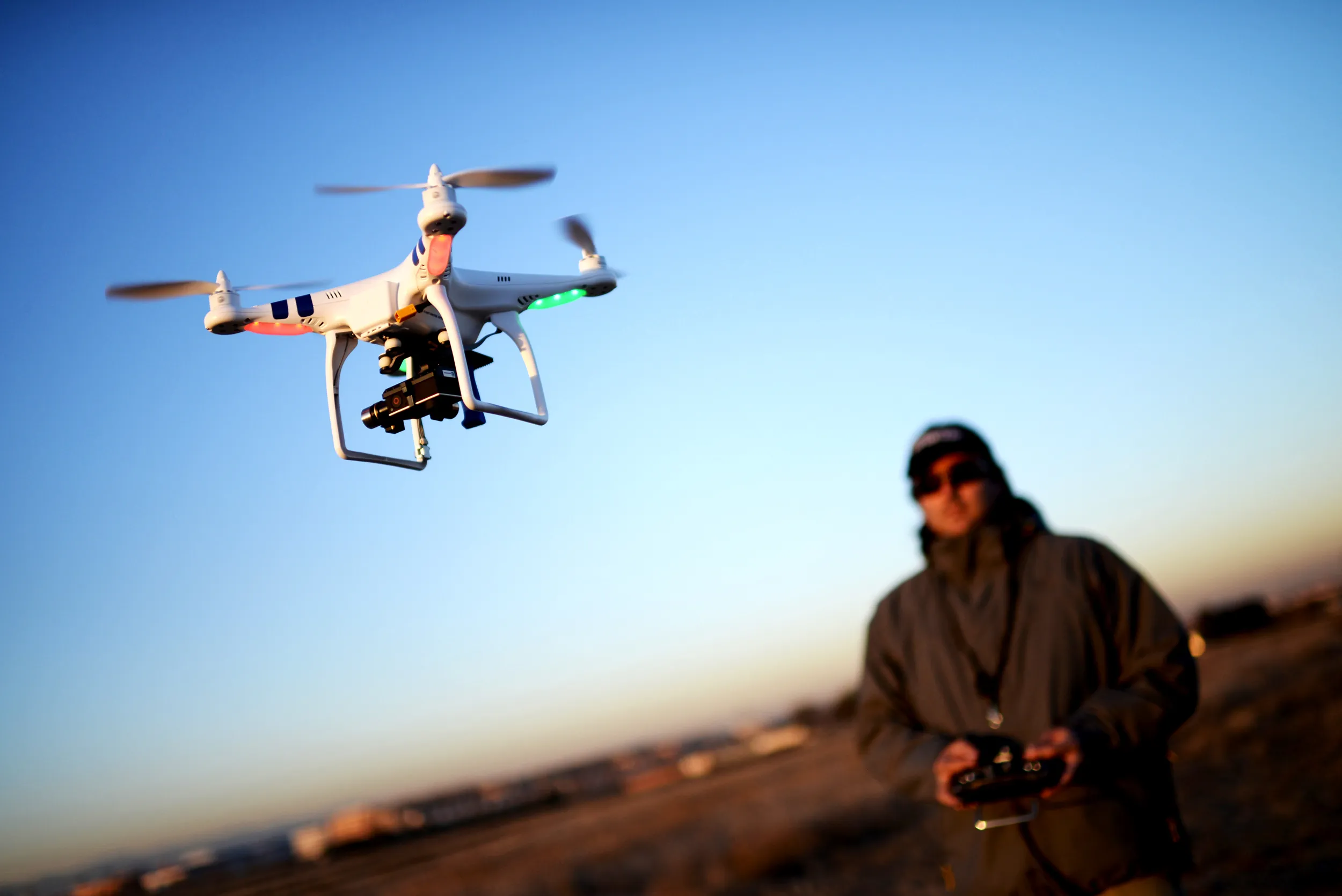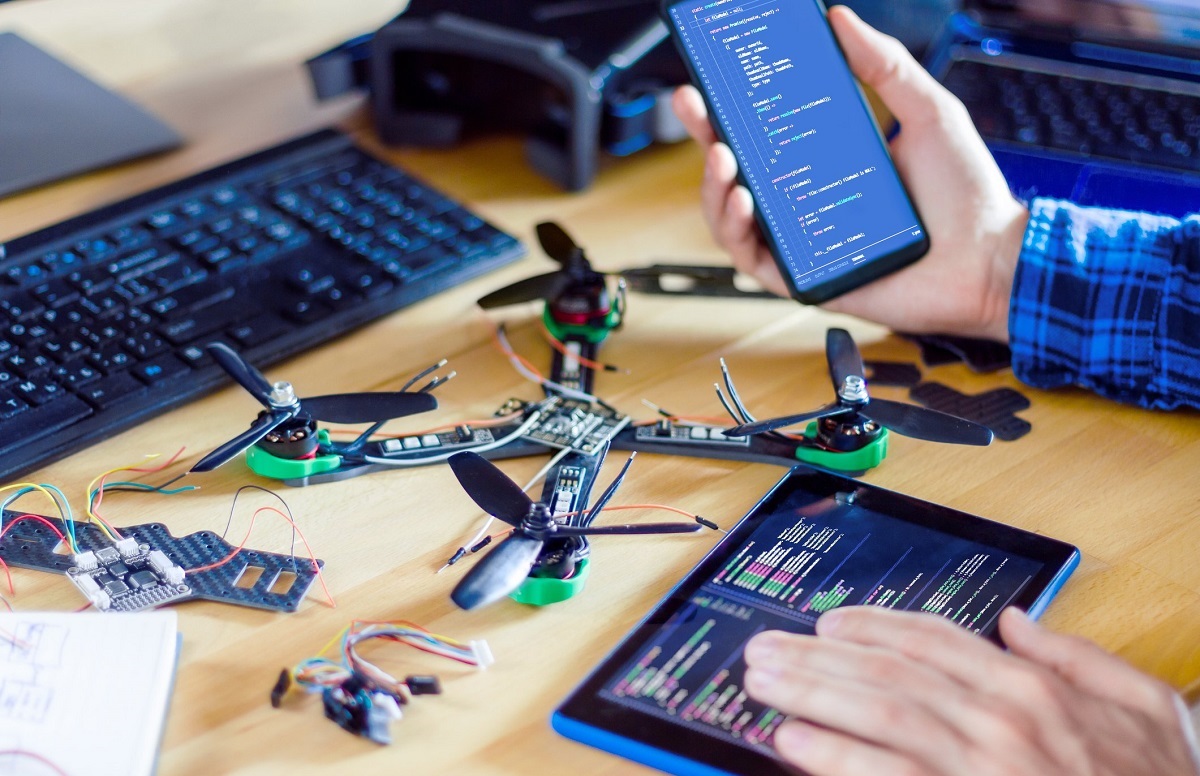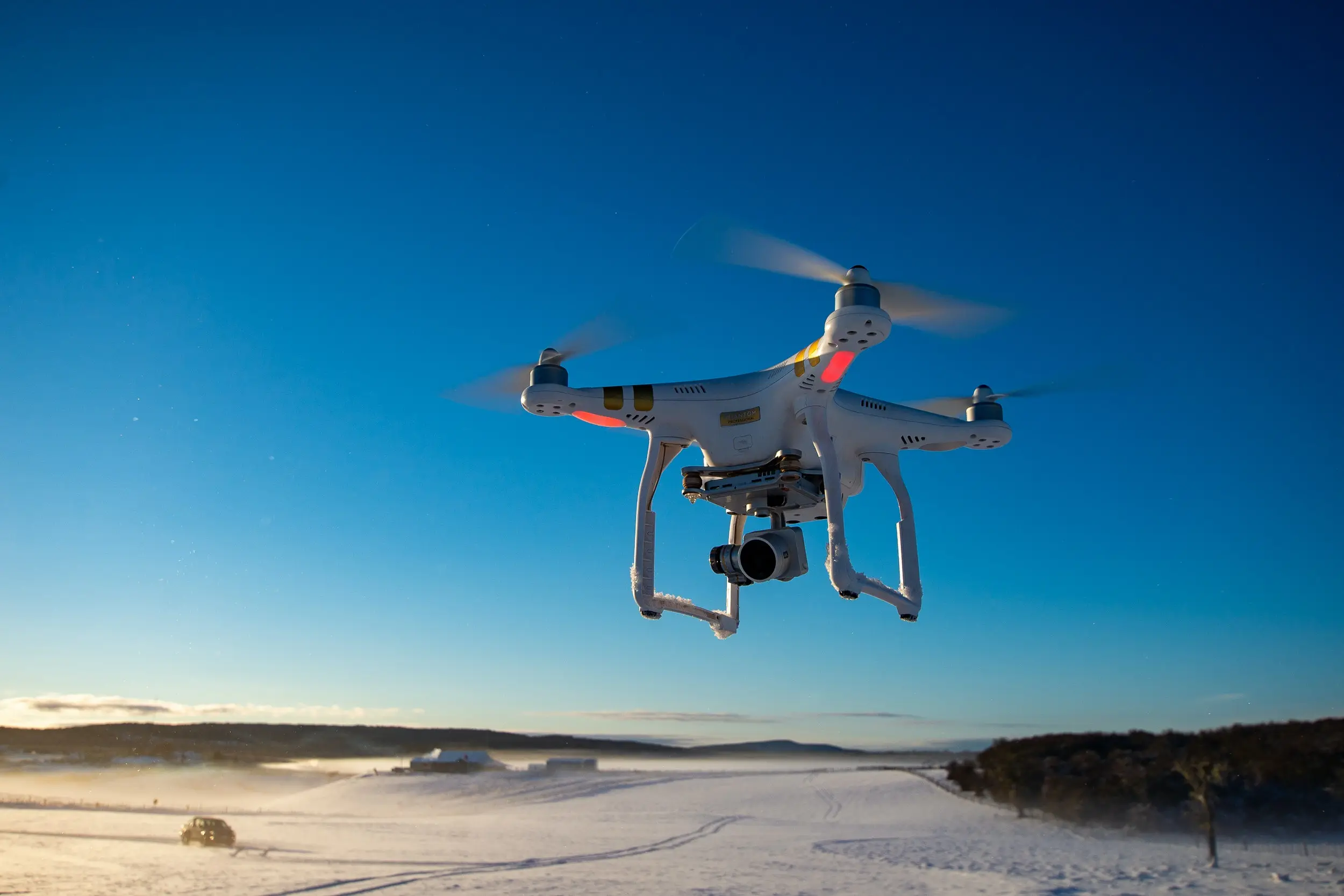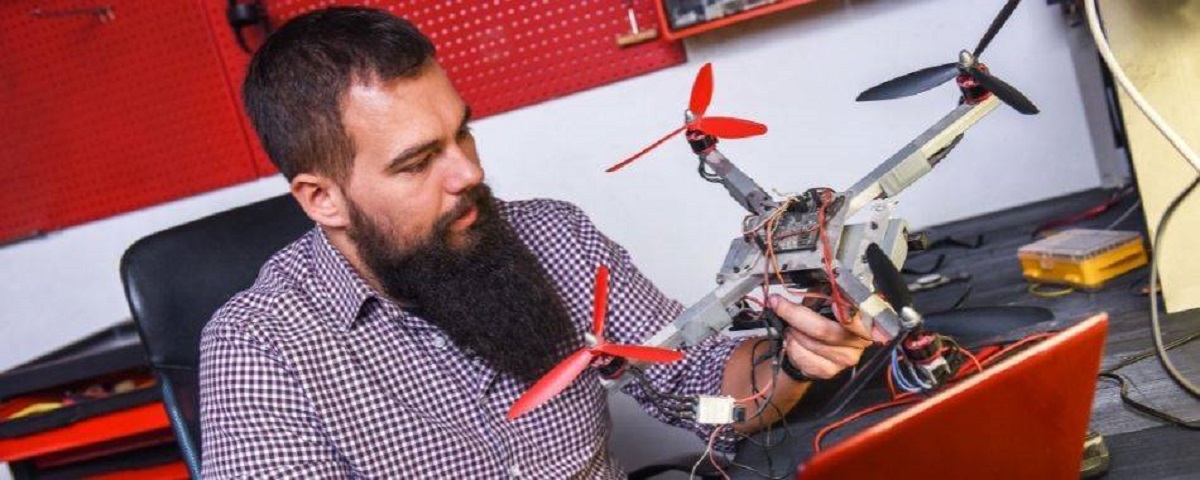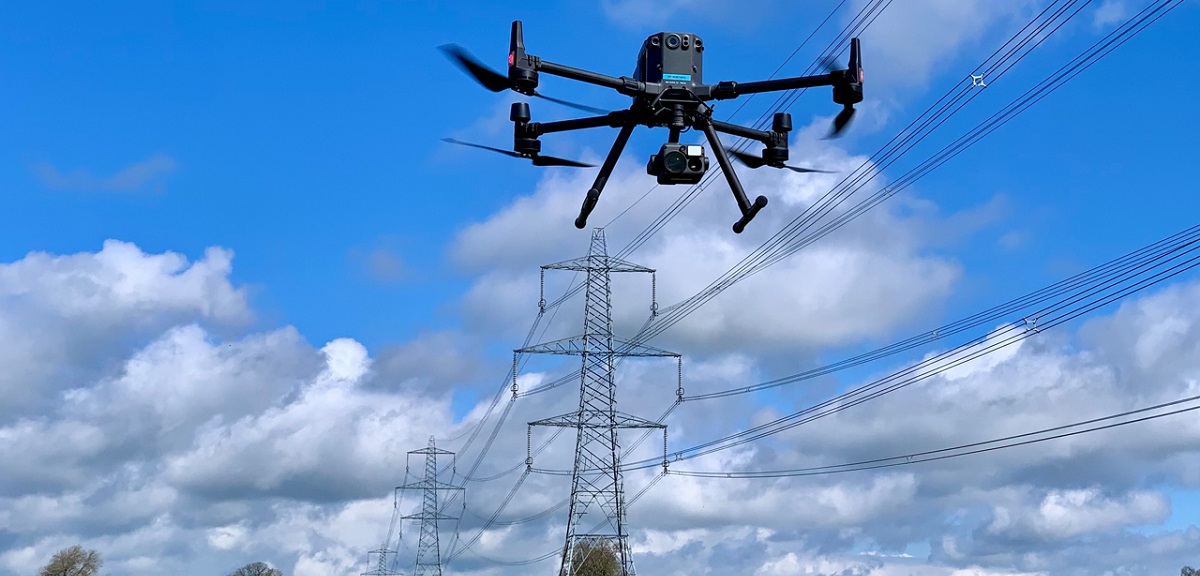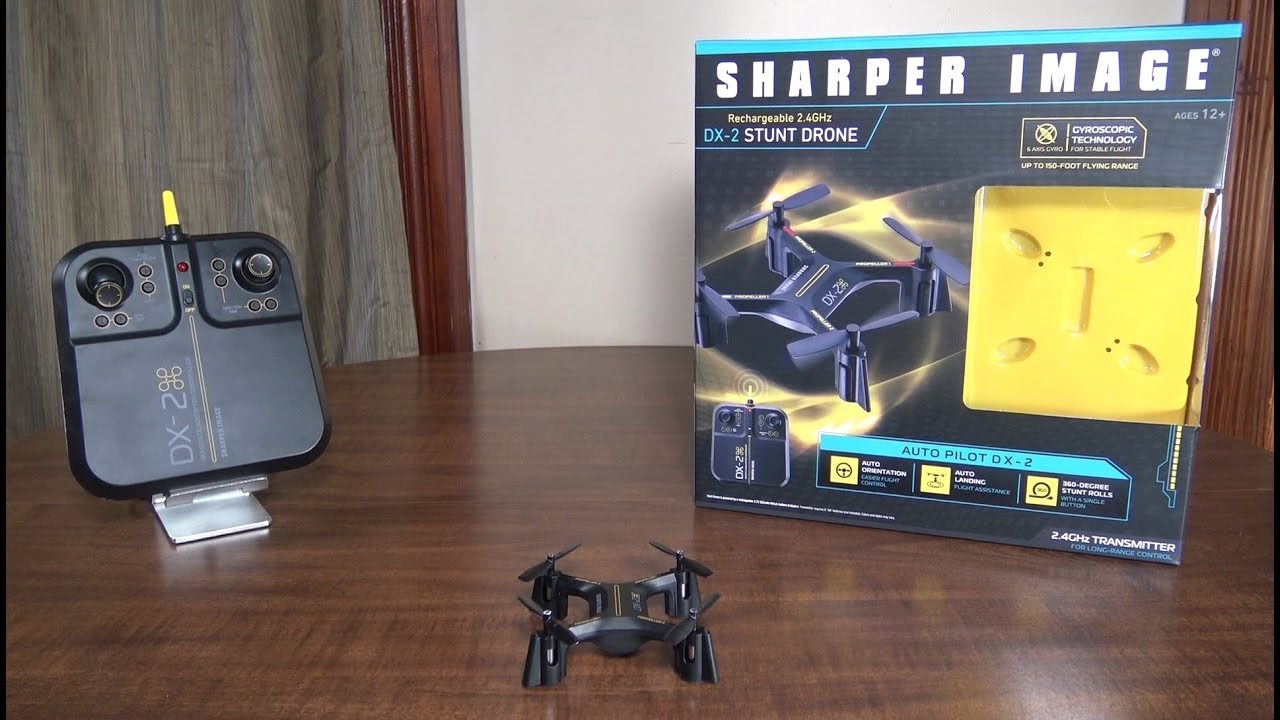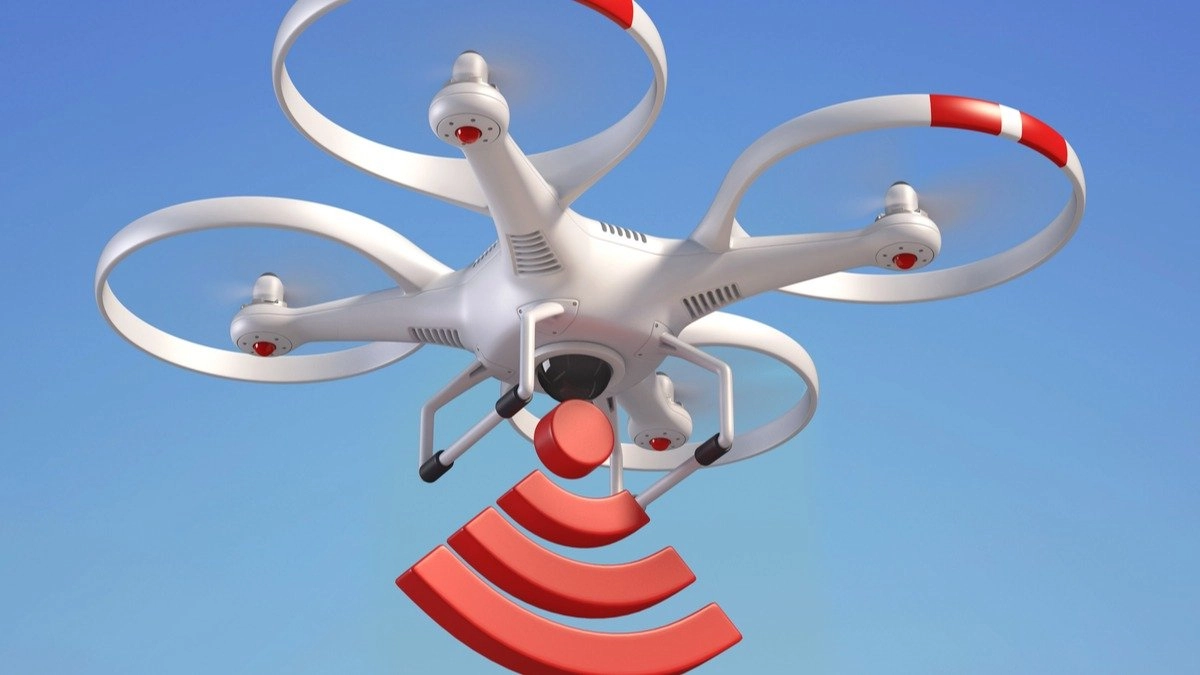Introduction
Drones have become increasingly popular in recent years, revolutionizing industries and transforming the way we capture images, deliver packages, and explore the world from above. These unmanned aerial vehicles (UAVs) offer versatility and convenience, making them accessible to a wide range of users, from hobbyists to professionals.
In this article, we will explore the various methods of controlling a drone and how different components work together to provide a seamless flying experience. Whether you’re a first-time flyer or a seasoned pilot, understanding the different methods of control is essential to navigate your drone with precision and confidence.
Before we dive into the control methods, let’s take a look at the basic components of a drone. A typical drone consists of a frame, motors, propellers, a battery, and an onboard computer. These components provide the necessary lift, propulsion, and power to keep the drone in the air.
Now let’s explore the different ways you can take control of your drone.
Basic Components of a Drone
Understanding the basic components of a drone is crucial to grasp how these devices operate. Here are the main components you will find on most drones:
- Frame: The frame serves as the body of the drone, providing stability and protection for the internal components. It is typically made of lightweight materials such as carbon fiber or plastic.
- Motors: Drones are equipped with multiple motors that generate the necessary thrust to lift the drone off the ground. These motors are controlled by the flight controller and work in sync to maintain stability and control.
- Propellers: Propellers are attached to the motors and create the airflow needed for lift and maneuverability. The direction and speed of the propellers determine the movement of the drone.
- Battery: Drones are powered by a rechargeable battery, usually a lithium polymer (LiPo) battery. The battery provides the necessary energy to operate the motors, flight controller, and other electronic components.
- Flight Controller: The flight controller acts as the brain of the drone. It receives inputs from the pilot or automated systems and processes them to control the motors and stabilize the drone. Modern flight controllers often feature advanced sensors and algorithms for smooth and precise flight.
In addition to these basic components, drones may also include advanced features such as cameras, sensors, and obstacle avoidance systems. These features enhance the capabilities of the drone for specific applications like aerial photography or mapping.
Now that we have covered the fundamental components of a drone, let’s move on to exploring the different methods of controlling them.
Remote Controller
A remote controller is one of the most common and widely used methods to control a drone. It is a handheld device that allows the pilot to communicate with the drone wirelessly. The remote controller typically has joysticks, buttons, and switches that provide precise control over the drone’s movement and other functions.
Most remote controllers operate on radio frequency (RF) technology, with a range that can vary depending on the model. The pilot uses joysticks to control the drone’s altitude, pitch, roll, and yaw movements. By manipulating these controls, the pilot can adjust the drone’s speed, direction, and orientation in the air.
The remote controller also provides real-time feedback to the pilot through the use of visual indicators, such as LED lights or an LCD display. These indicators display important information such as battery level, GPS signal strength, and flight mode status.
Many remote controllers also feature additional buttons and switches that can be customized for specific functions. For example, some controllers have dedicated buttons for capturing photos or videos, activating automated flight modes, or returning the drone to its home position.
It is important for pilots to familiarize themselves with the layout and functions of their specific remote controller. Practicing with the controller before flying the drone can help improve manual dexterity and overall flying proficiency.
Overall, the remote controller provides a reliable and intuitive way to control drones manually. It offers precise control over the drone’s movement and allows pilots to react quickly to changes in the flight environment.
Next, let’s explore another method of drone control that utilizes mobile apps.
Mobile App Control
In addition to using a remote controller, many drones can also be controlled through a mobile app. By downloading a dedicated app onto a smartphone or tablet, pilots can enjoy a different level of convenience and functionality.
Mobile app control offers a user-friendly interface that allows pilots to access various features and settings with just a few taps on the screen. The app connects to the drone via Wi-Fi or Bluetooth, providing a wireless link for sending commands and receiving real-time telemetry data.
Through the mobile app, pilots can access a range of features and functionalities, depending on the drone model and the capabilities of the app itself. These features may include:
- Live video feed: The app enables the streaming of a real-time video feed from the drone’s camera to the pilot’s mobile device. This allows pilots to see what the drone sees, enabling precise control and capturing stunning aerial footage.
- Intelligent flight modes: Many mobile apps offer pre-programmed flight modes that automate certain maneuvers or capture modes. These modes can include features like Follow Me, Waypoints, or Orbit, making it easier for pilots to achieve complex shots or fly the drone hands-free.
- Camera settings: With the mobile app, pilots can adjust camera settings such as exposure, white balance, and resolution directly from their mobile device. This allows for greater flexibility and control over the drone’s camera capabilities.
- Telemetry data: The app can display important flight data, such as altitude, speed, battery level, and GPS location. This information enables pilots to monitor the drone’s status and make informed decisions while flying.
Mobile app control provides a convenient and intuitive way to control a drone, especially for pilots who prefer using their mobile devices. It expands the capabilities of the drone by offering additional features and settings that enhance the flying experience.
Next, we will explore another method of controlling a drone that involves gesture interactions.
Joystick Control
Joystick control is another popular method of controlling a drone that allows pilots to have a physical, hands-on experience. Joysticks provide a familiar and intuitive interface for controlling the movement and behavior of the drone.
A joystick controller typically consists of two main sticks – one controlling the drone’s yaw and throttle, and the other controlling the drone’s pitch and roll. By manipulating these sticks, pilots can precisely control the drone’s movement in different directions.
Joystick controllers often come with additional buttons and switches that can be assigned to various functions and settings. These buttons can be used, for example, to change flight modes, activate autonomous features, or initiate camera captures.
One of the advantages of joystick control is the tactile feedback it offers. Pilots can feel the resistance and movement of the joystick, providing a more immersive experience and better control over the drone’s movements.
Joystick controllers can be standalone devices or integrated into a remote controller or gaming console. They often connect to the drone via a wireless link or through a USB cable.
It’s worth noting that mastering joystick control requires practice and hand-eye coordination. Pilots need to develop a sense of control and precision in order to fly their drones smoothly and safely.
Overall, joystick control offers a hands-on and tactile experience that many pilots find enjoyable and immersive. It’s a reliable method of controlling a drone that provides precise control over movement and responsiveness.
Next, we’ll explore another innovative method of drone control: gesture control.
Gesture Control
Gesture control is an innovative and futuristic method of controlling a drone that utilizes hand movements and gestures. This technology allows pilots to interact with their drone in a hands-free and intuitive way, making it an appealing option for those who want a more unique flying experience.
Gesture control systems use a combination of sensors, cameras, and algorithms to detect and interpret specific hand movements and gestures. These gestures are predefined and programmed into the drone’s software, enabling it to recognize and respond accordingly.
To control the drone using gestures, pilots typically need to stand in front of the drone’s camera and perform specific hand movements or gestures, such as raising their arm to initiate takeoff or making a ‘V’ sign to capture a photo.
Gesture control offers a range of advantages, including:
- Intuitive interaction: Pilots can control the drone’s flight and functions using natural hand movements, without the need for traditional controllers.
- Hands-free operation: Pilots can keep their hands free to focus on other tasks or capture photos and videos, making it ideal for capturing selfies or group shots.
- Immersive experience: Gesture control provides a unique and engaging way to interact with the drone, enhancing the overall flying experience.
While gesture control technology continues to improve, it’s worth noting that it may have limitations, such as the need for a clear line of sight between the pilot and the drone, and sensitivity to environmental conditions, such as lighting and background clutter.
As the technology evolves, gesture control has the potential to become more sophisticated and responsive, enabling even more complex interactions with drones.
Now that we’ve explored gesture control, let’s move on to another innovative method: voice control.
Voice Control
Voice control is an emerging method of controlling drones that allows pilots to communicate with their drone using voice commands. This technology leverages voice recognition software and natural language processing to interpret and execute pilot instructions.
With voice control, pilots can operate their drones by simply speaking commands or instructions, eliminating the need for physical controllers and allowing for a hands-free flying experience.
The use of voice commands provides several advantages:
- Convenience: Voice control allows pilots to interact with their drones effortlessly, without the need to manually operate physical controls or refer to a mobile app.
- Accessibility: Voice control opens up opportunities for individuals who may have physical limitations or have difficulty operating traditional control methods.
- Efficiency: Verbal commands enable pilots to quickly execute actions and change settings, reducing the time spent navigating menus and adjusting controls.
To activate voice control, pilots typically use a wake word or a specific command to notify the drone that they are ready to issue instructions. The drone’s software then processes the voice command and executes the corresponding action.
While voice control technology for drones is still in its early stages, advancements are being made to improve accuracy, responsiveness, and expand the range of available voice commands. Pilots can currently perform basic tasks such as takeoff, landing, capturing photos or videos, and toggling flight modes.
It’s important to note that when using voice control, clarity and enunciation are crucial for accurate recognition. Pilots should also be aware of excessive background noise that may interfere with the voice recognition software.
Voice control holds great potential in the future of drone control, offering pilots a seamless and intuitive way to interact with their drones. As the technology continues to evolve, we can expect even more advanced and robust voice control features to enhance the flying experience.
Now that we have explored different methods of controlling a drone, let’s move on to discussing the role of sensors and autopilot in drone control.
Sensors and Autopilot
Sensors and autopilot systems play a crucial role in the control and maneuverability of drones. These technologies work hand in hand to enhance the drone’s stability, responsiveness, and safety.
Sensors, such as accelerometers, gyroscopes, magnetometers, and barometers, provide real-time data about the drone’s orientation, position, altitude, and velocity. This information is constantly fed into the drone’s autopilot system, which processes the data and makes necessary adjustments to maintain stability and control.
Accelerometers measure the drone’s acceleration, allowing the autopilot system to accurately control the propulsion and speed. Gyroscopes measure the drone’s angular velocity and help maintain stability by adjusting the drone’s orientation. Magnetometers provide information about the drone’s heading and direction, aiding in accurate navigation. Barometers measure atmospheric pressure to determine the drone’s altitude.
In addition to these fundamental sensors, modern drones often include advanced sensors such as GPS receivers, ultrasonic sensors, and obstacle detection sensors. GPS receivers enable precise positioning and navigation, allowing drones to fly autonomously to specific locations or follow predefined flight paths. Ultrasonic sensors assist in flying at low altitudes and avoiding obstacles. Obstacle detection sensors use a combination of sensors and cameras to detect and avoid potential obstacles, enhancing the safety and collision avoidance capabilities of the drone.
Autopilot systems utilize the sensor data and advanced algorithms to control the drone’s flight autonomously or assist the pilot with flight tasks. The autopilot system can automatically adjust the drone’s attitude, stability, and altitude, making flight smoother and more reliable.
Autopilot systems also enable advanced flight modes, such as follow-me mode, where the drone can track and follow the pilot’s movements, or waypoint navigation, where the drone can autonomously fly to pre-programmed locations.
Overall, sensors and autopilot systems work in tandem to provide a seamless and controlled flying experience. The integration of these technologies enhances the drone’s stability, accuracy, and autonomy, opening up possibilities for advanced flight capabilities.
Next, let’s explore the role of GPS in drone control.
GPS Control
GPS (Global Positioning System) technology plays a significant role in modern drone control. By utilizing satellite signals, drones equipped with GPS receivers can determine their precise location and navigate with accuracy.
GPS control allows pilots to define specific coordinates or set waypoints for the drone to follow. With GPS-guided control, drones can fly autonomously, following a predetermined route or performing specific tasks.
One of the key advantages of GPS control is its ability to enhance stability and position hold capabilities. Drones with GPS systems can maintain a steady position by continuously adjusting their flight controls based on the received GPS data.
GPS control also enables features such as return-to-home (RTH). When activated, the drone uses GPS coordinates to autonomously fly back to its takeoff point, ensuring a safe return even if the pilot loses sight or control of the drone.
In addition, GPS control supports various flight modes, such as follow-me mode. In this mode, the drone can track and follow the pilot or another object, maintaining a constant distance and capturing footage from a unique perspective.
By integrating GPS data with autopilot systems, drones can engage in more advanced functions like waypoint navigation. Pilots can predefine a series of GPS waypoints that the drone will follow, enabling accurate and repeatable flight paths for mapping, surveying, or even aerial photography.
However, it is important to note that GPS control does have limitations. GPS signals can be affected by factors such as tall buildings, dense forests, or electromagnetic interference, leading to potential inaccuracies in positioning. This makes it essential for pilots to have a clear open sky and strong GPS signal reception for optimal control.
The combination of GPS control, sensors, and autopilot systems empowers drones with intelligent and precise flight capabilities. GPS technology continues to advance, paving the way for even more sophisticated and reliable control and navigation options in the future.
Now that we have explored GPS control, let’s move on to discussing the role of software interfaces in drone control.
Software Interfaces
Software interfaces play a vital role in drone control, providing pilots with intuitive and user-friendly platforms to interact with their drones. These interfaces can be in the form of mobile apps, computer software, or web-based applications.
With the advancement of technology, software interfaces have become more sophisticated, offering a wide range of features and functionalities:
- Flight Planning: Software interfaces allow pilots to plan flights by defining waypoints, setting flight routes, and configuring flight parameters. These interfaces often include tools for mission planning, enabling pilots to perform complex tasks with ease.
- Real-Time Telemetry: Software interfaces provide pilots with real-time telemetry data, including information on altitude, speed, battery level, and GPS location. This allows pilots to monitor the drone’s status and make informed decisions while flying.
- Camera Control: Many software interfaces offer camera control options, allowing pilots to adjust camera settings, capture photos or videos, and preview and download media files. This functionality enhances the capabilities of the drone for aerial photography or videography.
- Data Visualization: Software interfaces often include features to visualize and analyze flight data, such as flight logs, GPS tracks, and telemetry graphs. These tools help pilots review and analyze their flights for performance optimization and troubleshooting.
- Extended Functionality: Software interfaces can provide additional functionalities such as access to online mapping services, weather information, or even integration with industry-specific software for specialized use cases.
Software interfaces are designed to be user-friendly, with intuitive layouts, interactive maps, and clear menus. They enable pilots to have better control over their drones, simplifying the overall flight experience.
Furthermore, software interfaces often receive regular updates and improvements, incorporating user feedback and addressing bug fixes or adding new features. It is important for pilots to keep their software up to date to take advantage of the latest enhancements and optimizations.
Overall, software interfaces are crucial for effective drone control, allowing pilots to interact with their drones and access a wide range of features and functionalities. These interfaces continue to evolve, providing increasingly powerful tools for drone pilots and enhancing the overall flying experience.
Now that we have explored software interfaces, let’s conclude our discussion on the various methods of controlling a drone.
Conclusion
Controlling a drone is an exciting and versatile experience, offering a myriad of methods to suit different preferences and flying scenarios. From traditional remote controllers to advanced software interfaces and emerging technologies such as gesture and voice control, pilots have a range of options to choose from.
Understanding the basic components of a drone, including the frame, motors, propellers, battery, and flight controller, provides a foundation for navigating the various control methods available.
The use of a remote controller allows for manual control through precise joystick movements and intuitive button and switch configurations. Mobile app control provides convenience and additional features through an interactive interface on a smartphone or tablet.
Advanced methods like gesture control and voice control offer a more immersive and hands-free experience, with pilots using natural movements or spoken commands to interact with their drones.
Furthermore, sensors and autopilot systems, including GPS control, enhance stability, accuracy, and autonomy, enabling features such as waypoint navigation and return-to-home functionality.
Software interfaces play a critical role in drone control, providing pilots with intuitive platforms for flight planning, data visualization, camera control, and real-time telemetry. These interfaces continue to evolve, offering new and improved functionalities.
It is important for pilots to explore and master different control methods, ensuring they are comfortable and proficient with the chosen method before taking flight. Safety precautions and adherence to local regulations should always be a top priority.
As technology progresses, we can expect further advancements in drone control methods, offering even more innovative and immersive ways to interact with these fascinating aerial devices. Whether you are a hobbyist or a professional, there is a control method available that suits your needs and enhances your drone flying experience.
So, take to the skies and explore the limitless possibilities that controlling a drone has to offer!







